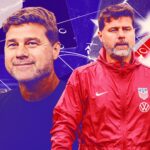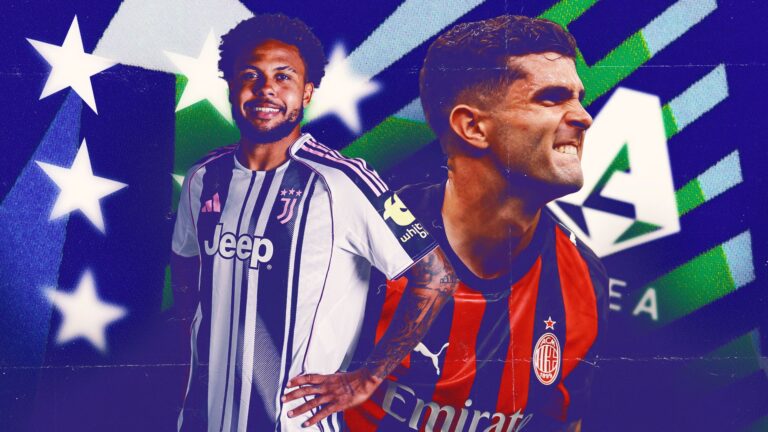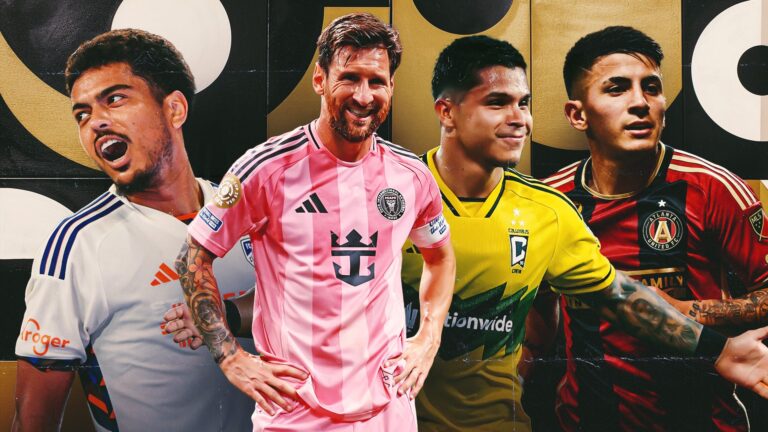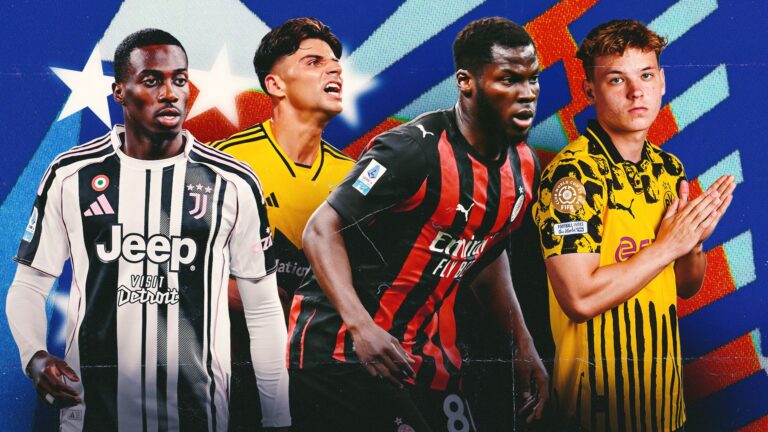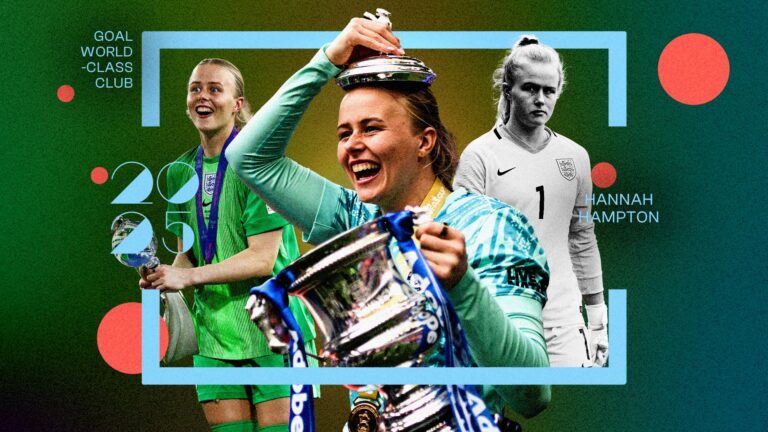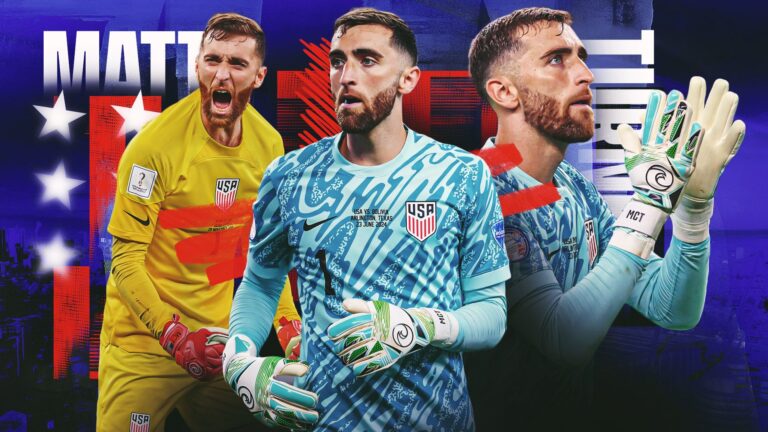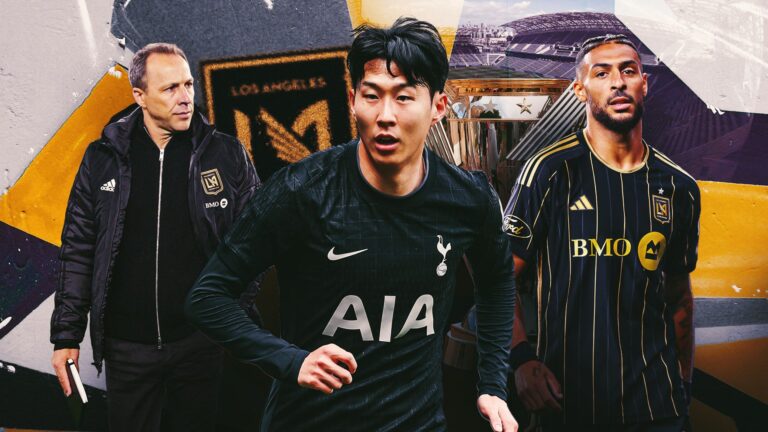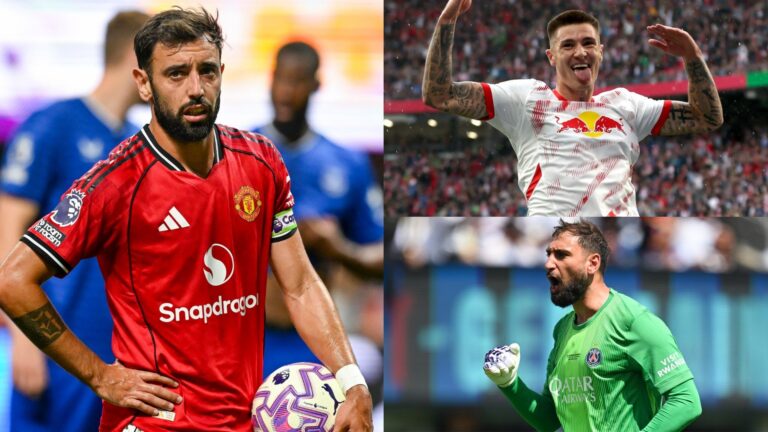Shortly after the Gold Cup final, U.S. Soccer posted an episode of their Behind the Crest series. That episode showed Mauricio Pochettino’s postgame locker room speech to his team in the aftermath of a 2-1 loss to Mexico. With tears in his eyes and with a voice full of emotion, Pochettino was clearly disappointed, but he offered hope for the future.
"This is not going to kill us," he said. "It’s going to make us stronger and I want you to never give up. We still have time to be better."
There is still time, yes, and the U.S. men’s national team surely needs to get better. Pochettino’s side have less than a year until the World Cup. That time is running out rapidly.
When Pochettino arrived last fall, replacing Gregg Berhalter, it was clear that time was always going to be a challenge. He had less than two years to assess the player pool, figure out a plan and, most importantly, win games. It was by definition challenging, but Pochettino is a top coach. That’s why he was brought in to lead this charge towards the World Cup in the first place.
As the clock ticks to June of 2026, where does that charge stand? What has Pochettino done well, what needs to be better and when will those changes be implemented?
Post-Gold Cup, BALLGM is looking at the state of the USMNT, analyzing the factors that will ultimately define next summer’s team. Next up: Coaching.
Previous State of the USMNT: Goalkeepers | Fullbacks | Centerbacks | Midfielders | Wingers | Strikers







Shortly after the Gold Cup final, U.S. Soccer posted an episode of their Behind the Crest series. That episode showed Mauricio Pochettino’s postgame locker room speech to his team in the aftermath of a 2-1 loss to Mexico. With tears in his eyes and with a voice full of emotion, Pochettino was clearly disappointed, but he offered hope for the future.
“This is not going to kill us,” he said. “It’s going to make us stronger and I want you to never give up. We still have time to be better.”
There is still time, yes, and the U.S. men’s national team surely needs to get better. Pochettino’s side have less than a year until the World Cup. That time is running out rapidly.
When Pochettino arrived last fall, replacing Gregg Berhalter, it was clear that time was always going to be a challenge. He had less than two years to assess the player pool, figure out a plan and, most importantly, win games. It was by definition challenging, but Pochettino is a top coach. That’s why he was brought in to lead this charge towards the World Cup in the first place.
As the clock ticks to June of 2026, where does that charge stand? What has Pochettino done well, what needs to be better and when will those changes be implemented?
Post-Gold Cup,BALLGMis looking at the state of the USMNT, analyzing the factors that will ultimately define next summer’s team. Next up: Coaching.
Previous State of the USMNT:Goalkeepers|Fullbacks|Centerbacks|Midfielders|Wingers | Strikers
Grading the USMNT’s tactics is not straightforward. That doesn’t just go for Pochettino but for most international managers and teams. At this level of the game, it’s extremely hard to build a tactical identity due to the lack of consistent time with a group and the lack of a reliable, repeatable player pool.
However, we have seen some different variations of Pochettinoball since he arrived and we’ve seen how the coach has approached tweaking his systems to accommodate who ii in camp.
With some version of an A-team, Pochettino will almost certainly use a 4-3-3 – or a 4-2-3-1 if you want to call it that – designed around getting the ball to his talented wingers. When that was not possible at the Gold Cup – due to a virtual starting lineup of absences, including Christian Pulisic, Folarin Balogun, Antonee Robinson, Tim Weah, Sergino Dest and Weston McKennie – Pochettino relied more on the creativity of Malik Tillman and Diego Luna rather than pure pace and skill out wide.
The system will likely tweak even more when Dest and Robinson are back in camo. That’s the point here: the tactics are only as solid as who is asked to execute them, and they’ll always be tailored to exactly that. This fall, in friendlies against the likes of Japan and Korea, will be the first time we’ll, theoretically, get to see all of Pochettino’s principles put into practice as his stars return from injuries or summer absences.
One thing you can knock, though, is the in-game decision-making, particularly at the Gold Cup. It’s understandable that Pochettino didn’t fully trust all of the players on his bench in big moments, given the general inexperience. But he was generally far too conservative with his substitutions. It’s something that will likely change going forward, but it is a knock, and a big one.
Grade: C
Ultimately, this is one of the most important jobs for any coach, particularly on the international level. Buy-in is always key. So, too, are relationships.
By and large, everyone in and around USMNT camp has said similar things about Pochettino, while adding that they’re all getting the same message: Just be you. For the newcomers in the pool, Pochettino has done well to instill confidence. For the familiar faces, he hasn’t looked to change much about how they play the game at this level.
However, there is an elephant in the room here: the Pulisic situation. It was the defining moment of the summer and will be the defining storyline of this USMNT until the American star steps back onto the field in a USMNT shirt. Truthfully, many will agree with how Pochettino handled the whole situation – Pulisic skipping the Gold Cup, the manager making it clear he’s the one who makes the roster decisions – which was admittedly a difficult one to navigate.
But the fact is that the management of one specific player – and most talented and recognizable player on the squad – has become a narrative. Because of that, this grade goes down.
Grade: B-
To be clear, Pochettino’s mandate isn’t talent development – it’s winning soccer games. More specifically, it’s winning soccer games next summer. The big picture stuff is up to others at U.S. Soccer. Anything Pochettino can add to that is just a bonus.
Surprisingly, though, the Argentine has been more focused on pulling in young talent than many would have expected. It’s clear that he enjoyed his experience at the annual January camp, which gave him the opportunity to work with a group of young, hungry, inexperienced players. Several of those players – Luna and Patrick Agyemang – became vital to the Gold Cup squad and could very well play at the World Cup.
More importantly, though, Pochetino addressed some concerns at the higher end of the roster. Malik Tillman took a huge leap this summer, which was crucial considering his lack of memorable moments in a USMNT shirt prior to that. Chris Richards was empowered to be a leader and clearly became one by the time the Gold Cup was over.
Those were two huge concerns for the U.S. and, while the players and their clubs deserve plenty of credit, Pochettino should be commended,for taking two very good players and helping to make them better.
GRADE: B+
Part of the reason Pochettino was hired was the optimism that he could build excitement around the team, and serve as the face of American men’s soccer. The USMNT needed a figurehead, one that could aggressively and positively take the reigns through this 2026 World Cup.
It helped, too, that Pochettino could embrace that role from a bi-lingual perspective, helping the federation bridge gaps with Latinos that they had never quite been able to.
It’s certainly brought more attention, particularly at the start of his tenure. Pochettino, to his credit, has largely been good with the media, shielding his team from blame in bad times while also using his availabilities to send not-so-subtle messages in the moments in which players needed to hear them. His time some of the world’s biggest European clubs clearly taught him how to play the game.
He plays it well.
Again, though, the Pulisic situation clouds everything and, while much of that media firestorm was created by the winger’s own decision to speak on it after the issue had seemingly been buried, Pochettino was dragged into that discussion – and he engaged. It led to his now-famous “mannequin” quip, one that will surely come back around when Pulisic returns to the team.
Grade: B
Culture. It’s been a ubiquitous buzzword since Pochettino arrived. At his introductory news conference, he spoke about creating a culture of winning. At his pre-Gold Cup availability, he spoke about developing a culture of pride, one that cares about more than golf or dinners. By the end of the Gold Cup, though, you could see the foundations. The only question is if they translate.
Throughout the summer, the members of the USMNT’s Gold Cup squad spoke about how close they had become. These things happen at major tournaments, but, for those living in that USMNT bubble, this summer seemed different. It was a bonding experience, one that everyone hopes will set a tone going forward.
No, this Gold Cup team wasn’t at full strength, but those who were in it are aiming to bring the attitude and commitment built throughout the tournament into the fall friendlies – and even to the veterans who missed the camp.
In that sense, there was a tangible culture change this summer. Yes, several big-name stars still have to buy in and, yes, Pochettino still has some questions to answer when it comes to translating brotherhood (nice-to-have) into wins (must-have).
But this was a step. Ultimately, the USMNT’s culture was probably more damaged than many were aware when Pochettino arrived. And now that repairs are underway, perhaps he can get building and converting camraderie into victories
Grade: B+
Ultimately, you can score perfectly in every other deliverable, but if the results don’t come, than none if it matters. Coaches aren’t defined by little moments, they’re defined by the big results. Thus far, not enough of those results have gone Pochettino’s way.
Since his arrival, Pochettino has amassed a 9-1-6 record, one which includes two losses to Mexico, one to Canada and one to Panama. It’s a small sample size, but Pochettino has won just 56 percent of his games. For comparison, at similar stages, Gregg Berhalter had won 68 percent, Bruce Arena 66 percent, Jurgen Klinsmann 64 percent and Bob Bradley 61 percent. Those comparisons aren’t apples to apples – difference in rosters, opponents and other varied circumstances – but at least directionally they do show that, thus far, a new coach has not translated into more success.
The Gold Cup final is understandable, as are the two friendlies that preceded it. That wasn’t a full squad and, in those types of games, results vary. However, March’s CONCACAF Nations League is the big stain on Pochettino’s USMNT resume, thus far.
With something closer to an A-team, the USMNT fell completely flat against Panama and then didn’t show much of a fight against Canada. It could be that the team needed to endure those breakdowns in order to offcially begin the rebuilding process. Or it could be that these were winnable games that the U.S. simply failed to win.
Unfortunately, there aren’t any competitive games left ahead of the World Cup to erase that stain. But there are some meaningful friendlies on the horizon, matches that will both test the USMNT and give Pochettino the opportunity to fully deploy his preferred roster – even as some decisions remain in the balance.
Results in those would go a long way towards easing doubts. Expectations are high. This is a coach who targeted at least a quarterfinal appearance for the USMNT at the World Cup. Those are lofty goals, and maximizing the remaining preparation time – and need to deliver the expected results – is all that matters.
Grade: D

